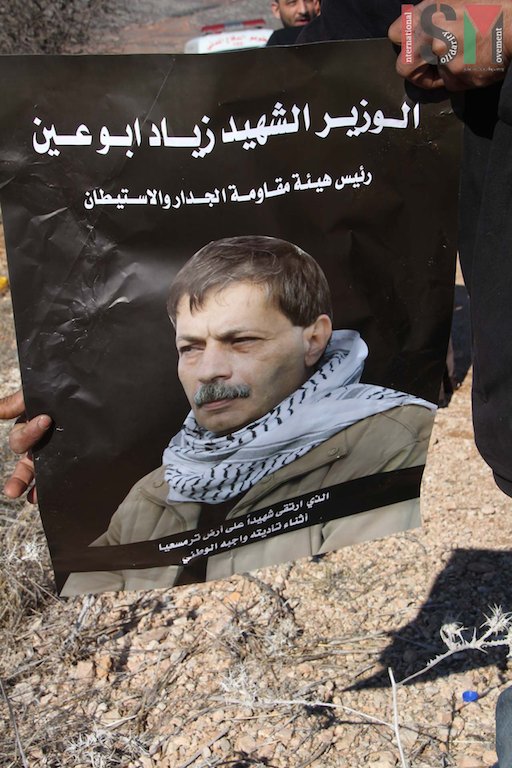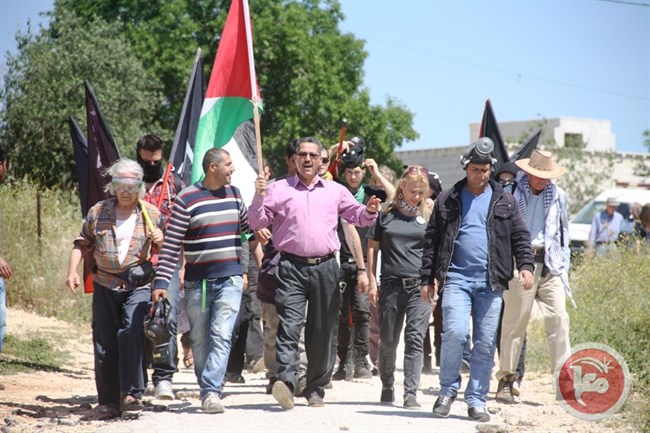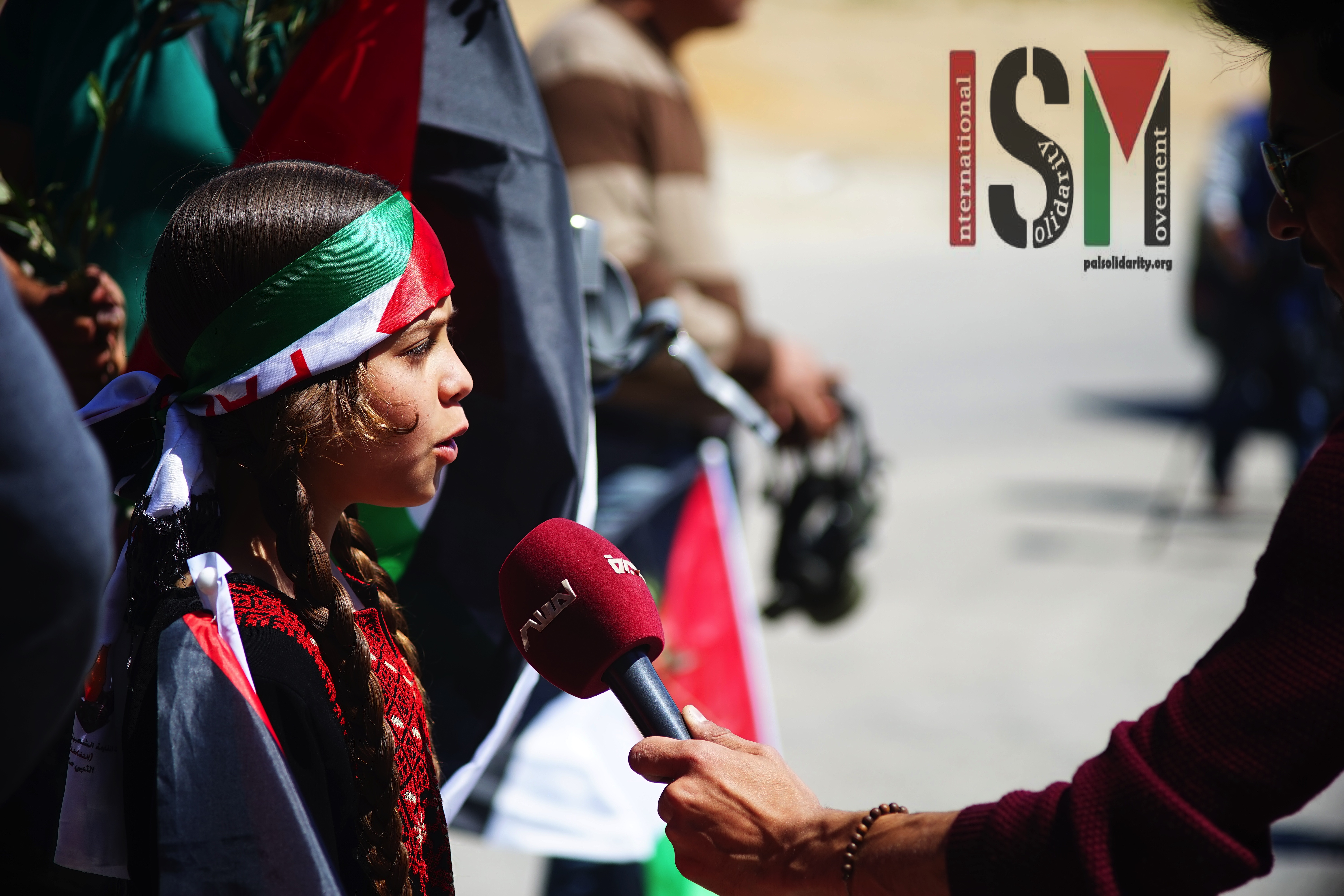Tag: Long range tear-gas
-
Remembering Ziad Abu Ein
13th December 2016 | International Solidarity Movement, Huarra team | occupied Palestine Ziad Abu Ein- 22-11-1959/10-12-2014 On December 9th,2016, hundreds of people gathered in the small village of Turmas Ayya, north of Ramallah, to commemorate the death of Ziad Abu Ein, a high profile Palestinian politician, Minister and Fatah leader, who died after inhaling…
-
Bil’in Land Day demonstration met with violence, long-range tear gas
2nd April 2016 | International Solidarity Movement, al-Khalil team | Bi’lin, occupied Palestine On 1st April 2016, the village of Bi’lin marked the 40th anniversary of Palestine’s Land Day during their weekly nonviolent Friday demonstration. Israeli forces attacked the peaceful demonstrators with a wide range of weaponry. The protesters marched towards the illegal apartheid wall…



